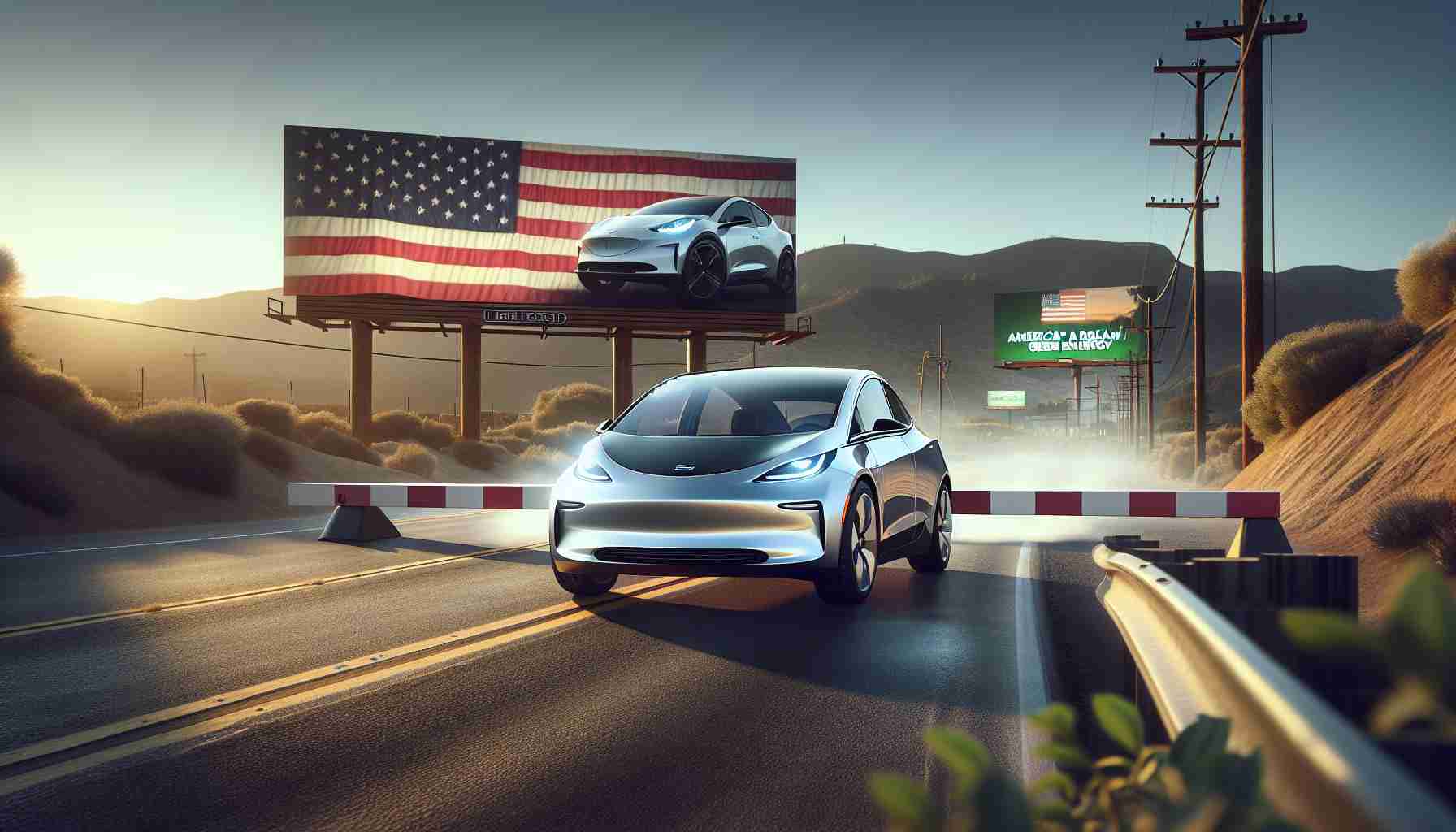- The Trump administration’s halt on funding for EV chargers raises concerns for manufacturers and eco-conscious consumers.
- This funding freeze is due to budget re-evaluations and shifting political priorities.
- The pause in funding threatens the development of a nationwide EV charging infrastructure.
- A decline in EV adoption rates is predicted as range anxiety grows among potential buyers.
- Stakeholders are encouraged to unify support to address this funding challenge.
- Innovations like ultra-fast and solar-powered chargers present potential solutions requiring sustained investment.
- The future of sustainable transportation in America is uncertain, making advocacy crucial at this pivotal moment.
The world is racing toward a greener future, yet a surprising twist could leave the electric vehicle (EV) landscape in a state of uncertainty. Recently, the Trump administration announced a sudden halt on funding for EV chargers, igniting serious concerns among manufacturers and eco-conscious drivers alike.
Imagine a vast network of EV charging stations, seamlessly connecting the nation and making electric driving a breeze. Now, picture that ambition flickering like a dying light bulb. The decision to freeze funds stems from budget re-evaluations and shifting political priorities, threatening the very infrastructure that could power America’s EV revolution.
This funding pause could significantly impact the growth of the EV market, with forecasts suggesting a potential decline in adoption rates as the charging station development grinds to a halt. Range anxiety, the fear of running out of battery power without a charging station nearby, looms large for potential buyers, putting the brakes on their willingness to transition to electric.
Stakeholders are urged to rally support to overcome this funding setback. Innovations in charging technology, like ultra-fast chargers and solar-powered stations, offer a glimmer of hope, but they require investment that may dwindle without government backing.
The key takeaway? America’s electric future hangs in the balance. It’s a critical moment for advocates to step up, ensuring that the dream of sustainable transportation remains a possibility, not just a dream. Will the U.S. turnaround before it runs out of charge? Only time will tell.
Is the Future of Electric Vehicles in Jeopardy? Discover the Latest Developments!
Electric vehicles (EVs) are heralded as the cornerstone of a sustainable future, yet recent funding freezes have cast a shadow over their potential. The suspension of federal funding for EV chargers, attributed to budget reevaluations, threatens to stall the growth of this burgeoning industry. Here’s what you need to know about the current landscape of EVs, what it means for the market, and how innovation might pave the way forward despite political challenges.
Market Forecast and Trends
The EV market was projected to expand significantly over the next decade, with a compound annual growth rate (CAGR) expected to reach around 22% by 2030. However, the halt in funding for the development of essential charging infrastructure raises concerns about this growth trajectory. Analysts predict that without sufficient charging stations, adoption rates may stagnate or decline due to persistent range anxiety among consumers.
Innovations in Charging Technology
Despite the funding uncertainties, several key innovations in charging technology could help mitigate the impacts of halting infrastructure investments:
– Ultra-Fast Chargers: These chargers can replenish EV batteries significantly quicker than traditional chargers, drastically reducing charging times from hours to minutes.
– Solar-Powered Charging Stations: Integrating renewable energy sources into charging infrastructure can create self-sustaining stations, lessening dependence on traditional power grids.
Limitations and Challenges
However, this innovation comes with its challenges:
– Investment Requirements: Developing these technologies and infrastructures requires substantial investment, which might be difficult to secure without government support.
– Public Acceptance: Even with innovation, consumer confidence is tied closely to the availability and reliability of charging stations.
Pros and Cons of Current Developments
# Pros:
– Potential for groundbreaking technology in renewable energy and ultra-fast charging.
– Continued interest and advocacy from environmental groups pushing for sustainability.
# Cons:
– Current political decisions could inhibit rapid infrastructure development.
– Lack of funding may improve energy inefficiencies and supply chain disruptions.
Key Questions Answered
1. How impacted will the EV market be without government funding for chargers?
– Analysts suggest a possible slowdown in growth and adoption rates, directly correlated to declining infrastructure investment, which could lead to increased consumer hesitance.
2. What innovations in EV charging could alleviate these concerns?
– Key innovations include ultra-fast charging technology and solar-powered stations. These advancements could improve efficiency and accessibility, but require significant funding for development.
3. What steps can stakeholders take to address the funding freeze?
– Stakeholders, including manufacturers, advocates, and consumers, can lobby for renewed funding, explore private investment opportunities, and promote the economic benefits of a robust EV infrastructure to convince policymakers to rethink their budget priorities.
Looking Ahead
The future of electric vehicles remains uncertain amidst political re-evaluations and funding suspensions. However, innovations in charging technology and a united front among advocates could still light the path forward. Stakeholders in the EV space must act now to ensure the dream of a sustainable transportation network doesn’t fade away.
For further insights on electric vehicles and sustainable transportation, visit Department of Energy.













